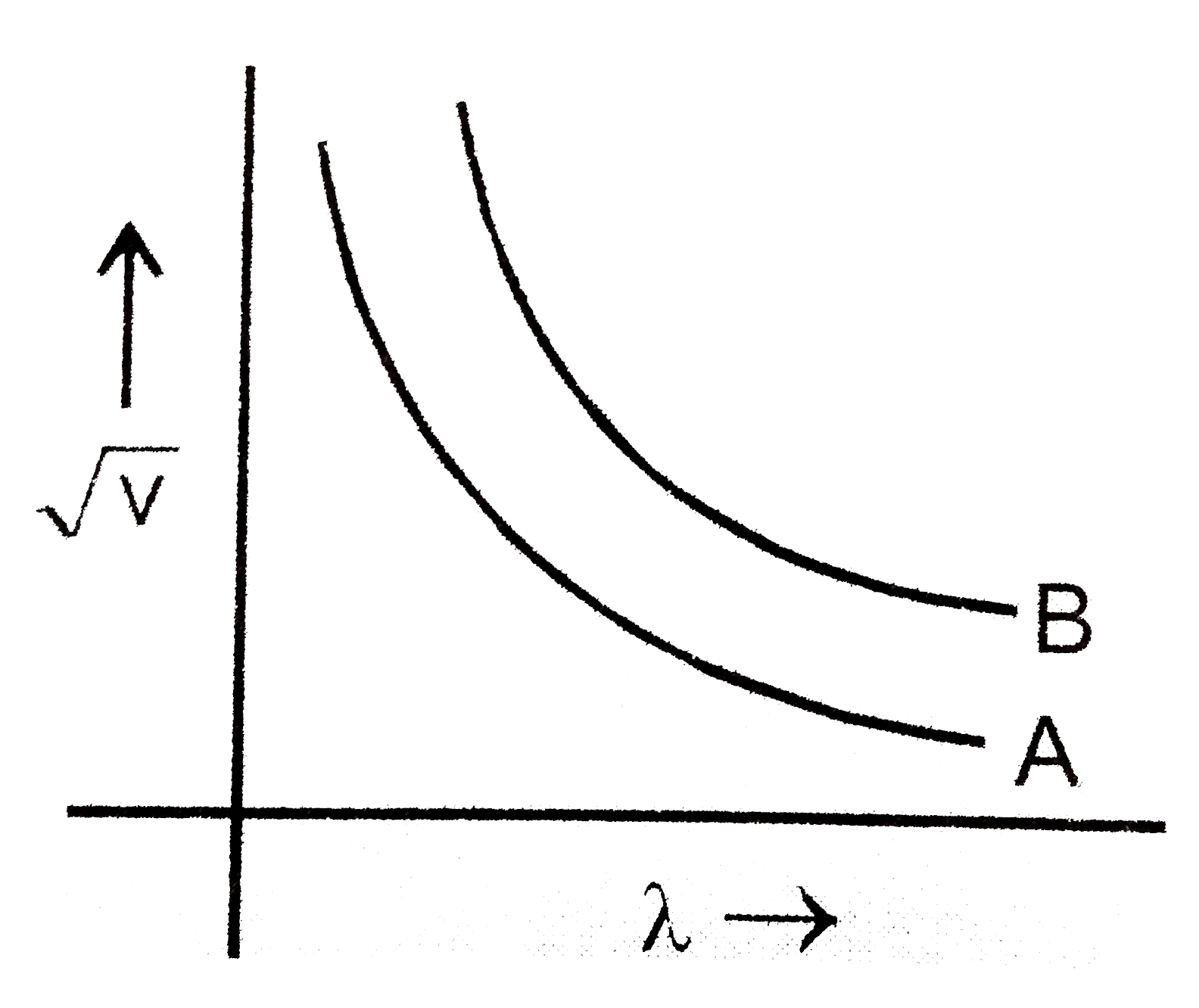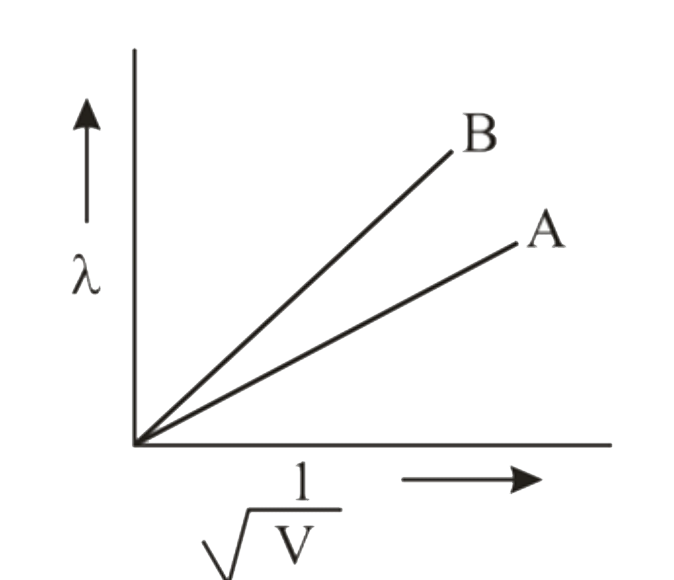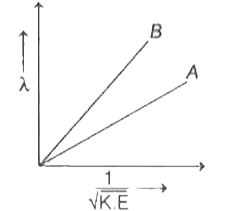For two particles A and B, curves are plotted √V against de-Broglie wavelengths, where V is the potential on the particles. Which of the following relation is correct about the mass of particles?  Solution in Telugu
Solution in Telugu
mA=mB
mA>mB
mA<mB
mAle m_(B)
The correct Answer is:B
Step by step video & image solution for For two particles A and B, curves are plotted sqrtV against de-Broglie wavelengths, where V is the potential on the particles. Which of the following relation is correct about the mass of particles? by Chemistry experts to help you in doubts & scoring excellent marks in Class 11 exams.
Updated on:21/07/2023Topper's Solved these Questions
Similar Questions
For similar orbitals having different values of n:
View SolutionA small particle of mass m moves in such a way that the potential energy U = ar2 where a is a constant and r is the distance of the particle from the origin. Assuming Bohr's model of quantization of angular momentum and circular orbits, find the radius of nth allowed orbit.
View SolutionCalculate ΔrG for the reaction at 27∘C
H2(g)+2Ag+(aq)⇔2Ag(s)+2H+(aq)
Given : PH2=0.5 bar, [Ag+]=10−5M,
[H+]=10−3M,ΔrG∘[Ag+(aq)]=77.1kJ/mol
View SolutionThe two lines A and B in fig. shoe the phot of de Broglie wavelength (lamda) as a function of (1)/(sqrtV) (V is the accelerating potential) for teo particles having the same charge. Which of the two represents the particle of heavier mass?
View SolutionPlot a graph showing variation of de-broglie wavelength lambda versus 1//sqrtV , where V is accelerating potential for two particle A and P carrying same charge but of masses m_1 and m_2(m_1gtm_2) . Which one of the two represents a particle of smaller mass and why?
View SolutionFor two particles A and B, curves are plotted sqrtV against de-Broglie wavelengths, where V is the potential on the particles. Which of the following relation is correct about the mass of particles?
View Solutionde Broglie wavelengths of two particles A and B are plotted against (1√V) , where V is the potential on the particles. Which of the following relation is correct about the mass of the particles ?

View SolutionPlot a graph showing variation of a de Broglie wavelength (lamda) associated with a charged particle of mass m, verses 1//sqrtV , where V is the potential difference thrugh which the particle is accelerated. How does this graph give us the information the magnitude the magnitude of the charge of the particle ?
View Solutionद्रव्यमान m तथा आवेश q के एक कण को V विभव द्वारा त्वरित किया जाता है। कण का डी ब्रोग्ली तरंगदैर्घ्य होगा
View SolutionConsider two particles of different masses. In which of the following situations the heavier of the two particles will have smaller de Broglie wavelength?
View SolutionPlot a graph showing variation of de-Broglie wavelength lamda versus 1/sqrtV , where V is accelerating potential for two particles A and B carrying same charge but of masses m_1, m_2 (m_1gt m_2) . Which one of the two represents a particle of smaller mass and why?
View SolutionThe following plot represents the de-Broglie wavelength as a function of the kinetic energy (K.E.) of two particles A and B. Identify the correct relation

View Solutionde Broglie wavelengths of two particles A and B are plotted against (1/sqrtV) , where V is the potential on the particles. Which of the following relation is correct about the mass of the particles ?
View Solutionएक सूक्ष्म कण के द्रव्यमान तथा चाल आधी है तो कण से सम्बन्धित डी - ब्रोगली तरंगदैर्ध्य
View SolutionPlot a graph showing variation of de-broglie wavelength λ versus 1/√V, where V is accelerating potential for two particle A and P carrying same charge but of masses m1andm2(m1>m2). Which one of the two represents a particle of smaller mass and why?
View SolutionPlot a graph showing variation of a de Broglie wavelength (λ) associated with a charged particle of mass m, verses 1/√V, where V is the potential difference thrugh which the particle is accelerated.
View Solution
